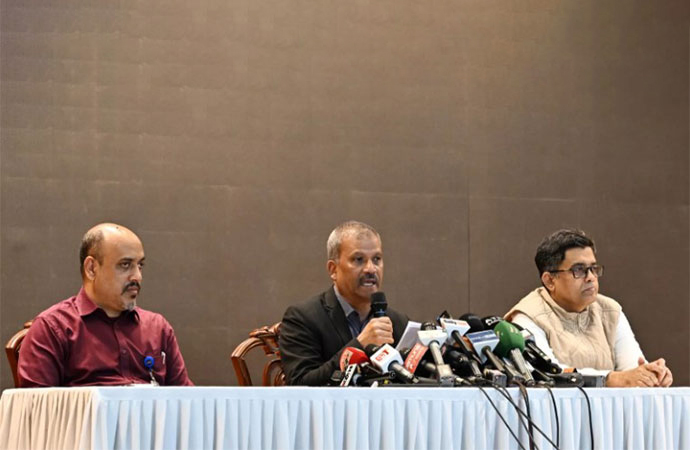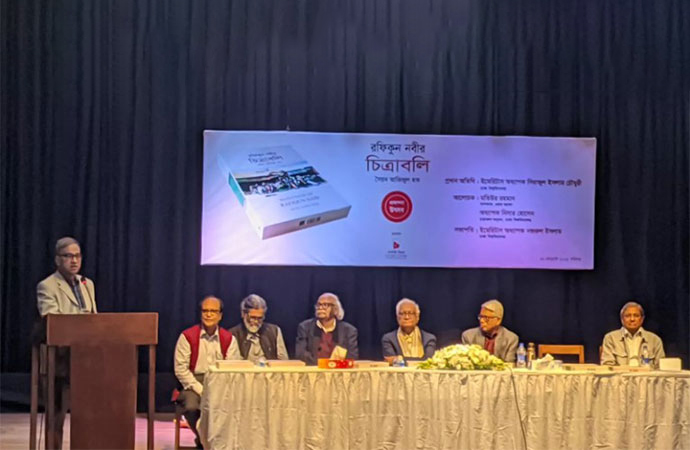Column

The number of foreign workers in Japan surpassed 1 million for the first time in 2015, as the labor-strapped country struggles to find enough Japanese workers. (Courtesy: The Japan Times)
Currently there are 1.28 million foreigners working in Japan and the figure represents a 100 percent increase from five years ago. Of this total, 297,000 are students and others working in part-time jobs and 258,000 are technical intern trainees from developing countries. Critics see such arrangements as camouflage for maintaining the Japanese government’s immigration policy of not accepting menial workers.
Japanese demographic balance is under threat. A declining population coupled with the advent of a rapidly aging society is posing a serious threat to the prospect of Japanese economy in longer term. Experts and analysts had been predicting such an outcome right from the turn of the century and also had been suggesting possible remedies for the country to cope with the situation. However, Japan's political elites had always been reluctant to give a careful hearing to such a call, fearing that opting for such policies might harm the country more than helping the nation to offshoot the imbalance in demographic structure.
A majority of the recommendations centered on opening the closely shut door of Japan for people from other countries for filling the gap in available work force. However, those who hold the key to such crucial decision-making process, such as political leadership and bureaucracy, had always been reluctant to go for that, fearing that allowing the flow of immigrants would seriously disrupt the social harmony that Japan is so accustomed with. Many were also worried about the polluting impact this might have on the society as a whole, since expatriates, specially the blue collars, are not accustomed with norms and customs of the society. As a result, when the worsening situation eventually compelled them to swallow the bitter pill, they came up with various strange plans and proposals that would allow them to take the full benefits of expatriate workers, but devoid those poor souls of the opportunity of settling down in the country and enjoy the benefits entitled to long-term residents.
One unique example is the technical intern training program, a downright method of exploitation of working class people from developing countries for the benefit of the Japanese society. Under the scheme, which continues to be functional after being introduced almost two decade ago despite being a target of criticism at home and abroad, the so-called young interns are allowed to enter Japan for a maximum period of three years and are sent back once their terms expire. Moreover, as trainees, the interns are paid allowances that hardly comparable to the normal practice. Moreover, to put an additional coloring of helping the countries of their origin, the scheme also proclaims that the knowledge and technical know-how the interns are to gain during the period of their stay in Japan would eventually become a valuable asset for the countries where they come from. However, in reality the areas where most of the interns work are farmlands and construction sites where their service is needed for substituting manual labor force, not as technical hands that would allow skill development in true sense.
On top of technical intern trainees, there is also a fleet of language school students who are allowed to get enrolled in part-time jobs for a certain number of hours every week. Japanese language schools in recent years have become an important supply-source for the Japanese society of much needed menial workers. Many such schools are busy these days venturing abroad with their local branches. Language school students are also susceptible to systematic exploitation, as part-timers in Japan are not entitled to any other benefit other than the hourly payment, which usually is the minimum set by the labor law.
Currently there are 1.28 million foreigners working in Japan and the figure represents a 100 percent increase from five years ago. Of this total, 297,000 are students and others working in part-time jobs and 258,000 are technical intern trainees from developing countries. Critics see such arrangements as camouflage for maintaining the Japanese government's immigration policy of not accepting menial workers.
To address the criticism of being too rigid and too choosy in accepting immigrants in time of need, the cabinet of Prime Minister Shinzo Abe has approved a bill in early November to revise the immigration control law for allowing more foreign workers into Japan. The administration intends to introduce the new measures by next spring in certain sectors like construction and nursing care and Japan by then is expected to accept roughly 400,000 foreign workers under two new residency statuses. Under this new system, workers with certain knowledge and experience could apply for category 1 status, which would allow holders to work in Japan for a maximum five years, but will not give them the right to bring their families. Those with expert skills could get the renewable category 2 status that permits holders to bring spouses and children.
Overtly, things look fine and it gives an understanding of Japan's slow opening of country's closely shut doors for expatriate workers. However, a number of crucial factors associated with the scheme give a different picture.
Some see the new measures simply as an extension of past facades and nothing more than an attempt to save face. A tight control on the inflow of foreign workers might give a mistaken understanding that Tokyo is raising the alert level due to an ever increasing flow of blue-collar workers from developing Asian countries. However, it should not be forgotten that the main reason for the rapid increase of foreign workers is the sharp decline of Japanese workers in the productive age range group. In other words, they come to Japan not only for exploiting the situation, but also for helping the country at the time of trouble. So, they should not be treated simply as workforce in the production equation, but also should be considered as human beings with certain needs. The new government measures seriously lack this understanding.
The new law aims to limit their stay in Japan to five years in principle and does not recognize the right of family members to accompany them. For five long years these people will be deprived of family bondage, which in other words would mean, Japanese government intends to see them working in production lines or in construction sites and farmlands like robots, not as human beings with hearts and minds that differentiate them from machines.
(Tokyo, November 4, 2018)

























Leave a Comment
Recent Posts
Reflections on Press Freedom
Having been ensconced in the country’s media landscape in a vari ...
Rejuvenating EU ties in an era ...
Ernst B. Haas coined the theory of neo-functionalism to describe the E ...
Farmers Are Not Only Food Producers, They Are Also V ..
10-day 'Amar Ekushey Natyotsab 2025' kicks off at Su ..
How the tables were turned on Ukraine
The New Face of Protest